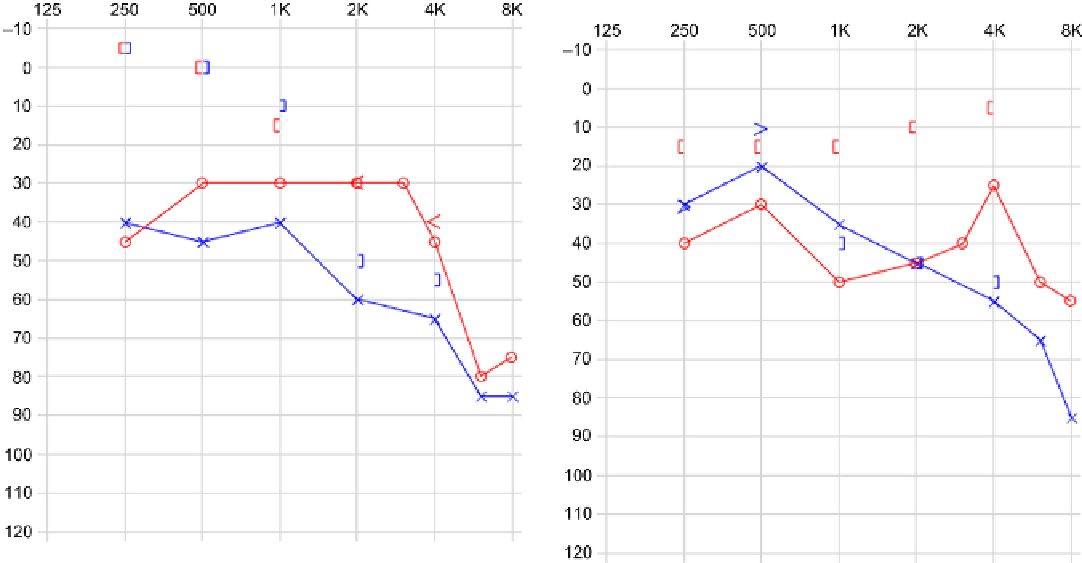what-when-how
In Depth Tutorials and Information
reflex waveform and the level dependencies of the
measures. Multiple frequency tympanometry or two-
component higher frequency (678 Hz) tympanometry
may help clarify the results in identification of ossicular
chain disruptions.
24
Measurement of otoacoustic emis-
sions have also been utilized in patients with OI and it
has been reported that abnormal findings were present
in up to 63% of patients 20 years of age and older and in
29% of patients less than 20 years of age.
22
This can be secondary to anything that impairs this
transmission such as wax, infection, fluid or ossicular
problems. The middle ear functions as an impedance-
matching transformer that transmits sound waves from
the surrounding air-filled media to the fluid-filled media
of the inner ear. The middle ear ossicles are an inte-
gral component of the system and significant hearing
loss of up to 70 dB HL can result from ossicular dam-
age. Children get frequent ear infections and fluid in
the middle ears. This leads to a conductive hearing loss
while the fluid is present. Tympanometric abnormalities
consistent with the presence of middle ear effusion were
recently reported in 43% of pediatric patients with OI.
22
Typical failure rates for tympanometry in pre-school
and school age children are more typically in the range
of 8.6%-13.5%
25,26
which suggests a higher rate of failure
for tympanometry in OI than in the general preschool
and school age population. A high incidence of otitis
media with effusion in pediatric patients with OI has
been reported and has been attributed to the presence
of craniofacial dysmorphism in OI.
27
Increased preva-
lence of otitis media is also commonly reported in other
syndromes which are characterized by morphological
abnormalities of the temporal bone.
28
It is not clear if
possible changes in head shape associated with OI lead
to a greater incidence of middle ear fluid in children with
OI.
27
Some reporters feel that there is and include the
statistics of middle ear fluid in their reported incidence
TYPES OF HEARING LOSS
The types of hearing loss seen with OI are conduc-
tive, sensorineural and mixed (conductive and sensori-
neural). In
Figure 32.3
, audiological findings are shown
for a 43-year-old male with OI. This individual has a
mixed hearing impairment with a conductive hearing
loss in the low-frequency region from 250 to 1000 Hz
with sensorineural hearing loss at 2000 Hz and above.
In
Figure 32.4
, findings for a 35-year-old female with OI
are shown. This patient has a sensorineural hearing loss
for the left ear and a conductive hearing loss for the right
ear. Both individuals manifest asymmetries in sensitivity
and/or etiology of their hearing impairments.
Conductive hearing loss occurs when sound transmis-
sion from the outside world to the inner ear is impaired.
FIGURE 32.3
Audiological findings are shown for a 43-year-old
male with OI. This individual has a mixed hearing impairment with
a conductive hearing loss in the low frequency region from 250 to
1000 Hz with sensorineural hearing loss at 2000 Hz and above.
FIGURE 32.4
Findings for a 35-year-old female with OI are
shown. This patient has a sensorineural hearing loss for the left ear
and a conductive hearing loss for the right ear.

